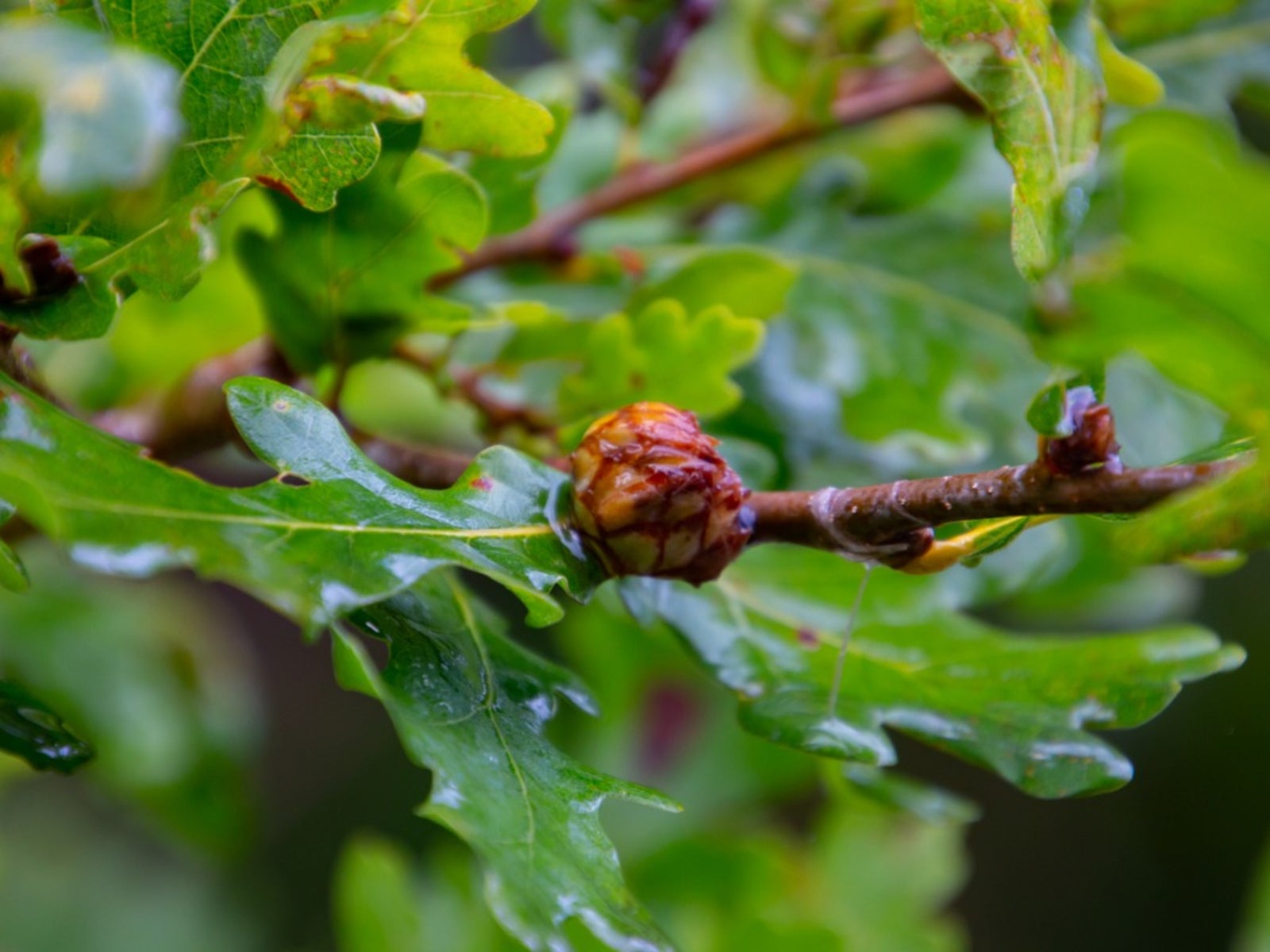Leaf Gall Identification: Learn About Preventing And Treating Leaf Gall On Plants


Odd little bumps on leaves and funny protuberances on your plant's foliage may be a sign of pest, bacterial, or fungal problems. These galls may look like they are hurting the plant's health, but leaf galls on plants are actually harmless. There are nearly as many types of galls as there are causes. Leaf gall identification is tricky, as many galls look similar. Galls are often named after their tree species and may be confined to one family or genus of plant.
Causes for Leaf Galls on Plants
Leaf galls on plants are usually the result of mites and other sucking insects that make their homes under the plant tissue. Their feeding activities cause some galls, while chemicals secreted during egg growth in saliva or even excretions, may cause the changes to plant tissue. These changes may not be limited to bumps on leaves. Flowers, fruits, and even roots can develop these changes in tissue. Leaf galls are also sometimes found on stems and trunks. Other causes for galls are fungal and bacterial diseases.
What Does Leaf Gall Look Like?
When it comes to leaf gall identification, even the most experienced gardener may wonder, what does leaf gall look like? The appearance is generally recognized as a bump, peak, or scabby area of plant flesh. They are firm to the touch and may be thickly coating a plant, found singly or in pairs. Leaf galls on plants might be green and match the plant material. They might also be bright pink or red and resemble large pimples. Many galls are named for their appearance. There are blister, bud, nipple, pouch, and roly-poly galls to name a few. Other galls are named for the plant affected, such as oak tree galls. Still other galls get their name from the area affected. These are bud, flower, leaf, twig, and root galls. Galls aren't necessarily bad for your plants but they can mar the appearance of prize and ornamental specimens. In these cases, it is important to know how to treat leaf gall.
How to Treat Leaf Gall
It is easier to prevent leaf galls than to treat them once they are there. In fact, treatment is not recommended, as the galls are doing no harm and any chemical formulation used could actually do more harm than good. Before you ever see bumps on leaves or other plant parts, spray with a miticide to prevent galls on ornamental plants. Horticultural oils and some insecticides will be effective but not after the mites are under the surface of the plant. Don't use broad spectrum insecticides, which will harm potential predators of the gall mites. Give the plant good and appropriate care to encourage good health. Reduce the chance of injury to plant stems and trunks which could encourage the introduction of insects, fungal, or bacterial diseases. The most fool proof way to avoid galls is to choose plants that are resistant to the most prevalent varieties in your zone.
Gardening tips, videos, info and more delivered right to your inbox!
Sign up for the Gardening Know How newsletter today and receive a free copy of our e-book "How to Grow Delicious Tomatoes".

Bonnie Grant is a professional landscaper with a Certification in Urban Gardening. She has been gardening and writing for 15 years. A former professional chef, she has a passion for edible landscaping.
-
 Looking For Plants To Give You The Soft And Fuzzies? Try These 5 Fuzzy Leaf Plant Options
Looking For Plants To Give You The Soft And Fuzzies? Try These 5 Fuzzy Leaf Plant OptionsLovers of texture, drama, silver foliage and tactile plants will adore these special sensory garden additions. These fuzzy leaf plant options will leave you all aglow
By Susan Albert
-
 Get Ready For A Summer Of Hummers! Grow These Full Sun Hummingbird Plants and Flowers
Get Ready For A Summer Of Hummers! Grow These Full Sun Hummingbird Plants and FlowersIf you’re lucky enough to enjoy a sunny backyard, make sure you are maxing out on your pollinator opportunities and grow these full sun hummingbird plants and flowers
By Tonya Barnett